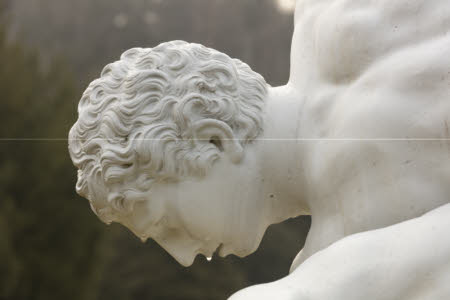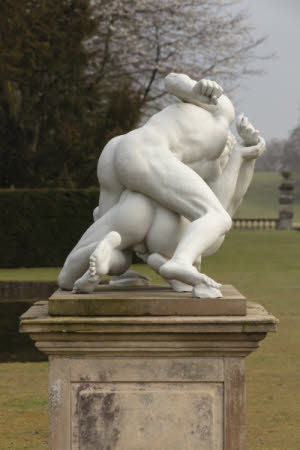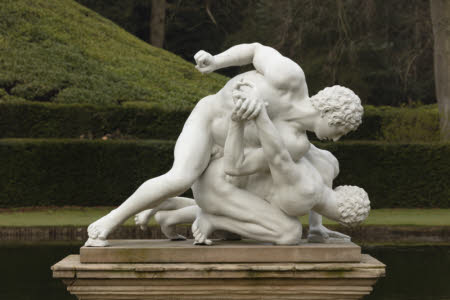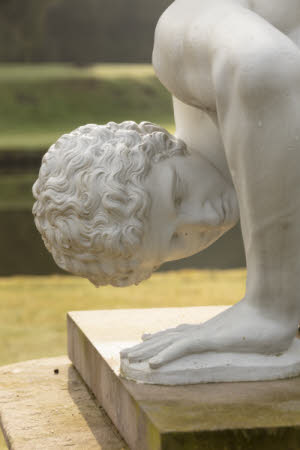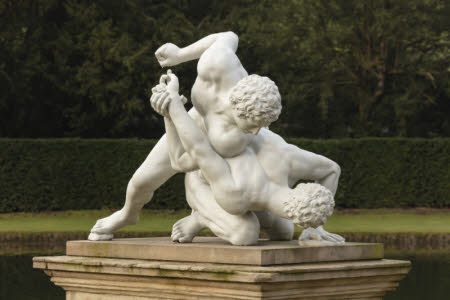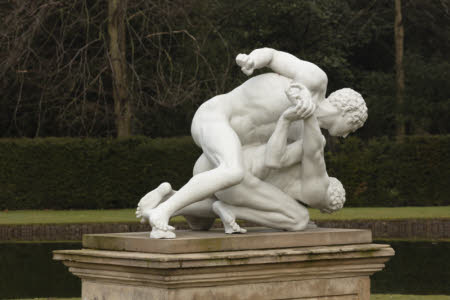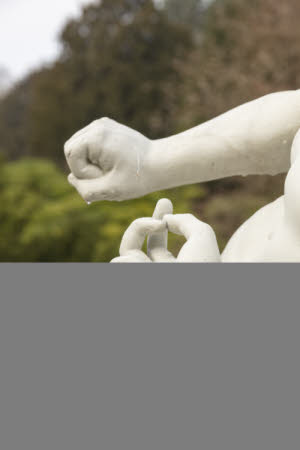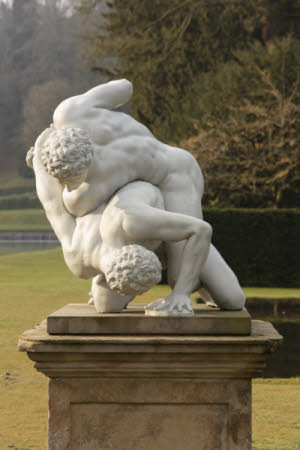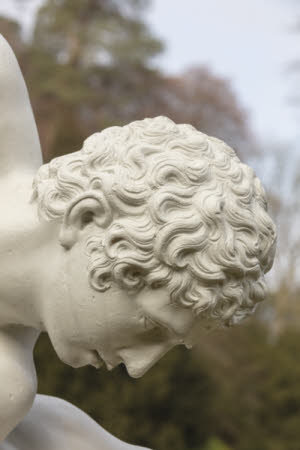The Wrestlers
previously catalogued as by Andrew Carpenter (c.1677 - London 1737)
Category
Art / Sculpture
Date
1730
Materials
Lead on stone plinth
Measurements
1140 x 1080 mm; 1560 mm (Height)
Place of origin
London
Order this imageCollection
Fountains and Studley Royal, North Yorkshire
NT 530889
Summary
Lead on stone plinth, The Wrestlers, Andrew Carpenter (c.1677 - 1737), after the antique, 1730. A lead sculpture by Andrew Carpenter after the Roman marble in the Uffizi, Florence. Two young men are engaged in the pankration, a form of ancient Greek wrestling similar to today's mixed martial arts. The upper wrestler has his left leg entwined with his opponent's left leg, and his body across his opponent's body, twisting his opponent's right arm up. The sculpture is mounted on a stone plinth.
Full description
The Roman group is thought to be a copy of a lost Hellenistic bronze, possibly school of Lysippus, and was discovered, along with the Niobe group (Uffizi, Florence), in 1583 near the Porta San Giovanni, Rome. On 25 June of that year both groups were purchased by Cardinal Ferdinando de' Medici and installed in the Villa Medici before being removed to the Tribuna of the Uffizi in 1688. The Wrestlers was widely copied, a cast being ordered for Philip VI of Spain in 1650 and copies in marble being produced for Louis XIV for Versailles and Marly in the 1670s and 80s. Copies in bronze were made by Soldani and in lead by Andrew Carpenter. A price list submitted by Carpenter to Lord Carlisle shows that the 'Roman Wrestlers' was produced for Castle Howard in 1723 at the cost of £20. The rendering of anatomy in The Wrestlers was considered of great academic value: the musculature was analyzed by Flaxman in his Royal Academy lectures, a terracotta study was made by Canova, and Pierre Subleyras closely studied the group in a painting which features his Artist's Studio of 1746 (Akademie der bildenden Künste, Vienna). Alice Rylance-Watson January 2019
Marks and inscriptions
Makers and roles
previously catalogued as by Andrew Carpenter (c.1677 - London 1737) , workshop
References
Haskell and Penny 1981: Francis Haskell and Nicholas Penny, Taste and the Antique, The Lure of Classical Sculpture 1500 - 1900, New Haven and London, 1981, pp.337-8, no.94 (reproduced)
